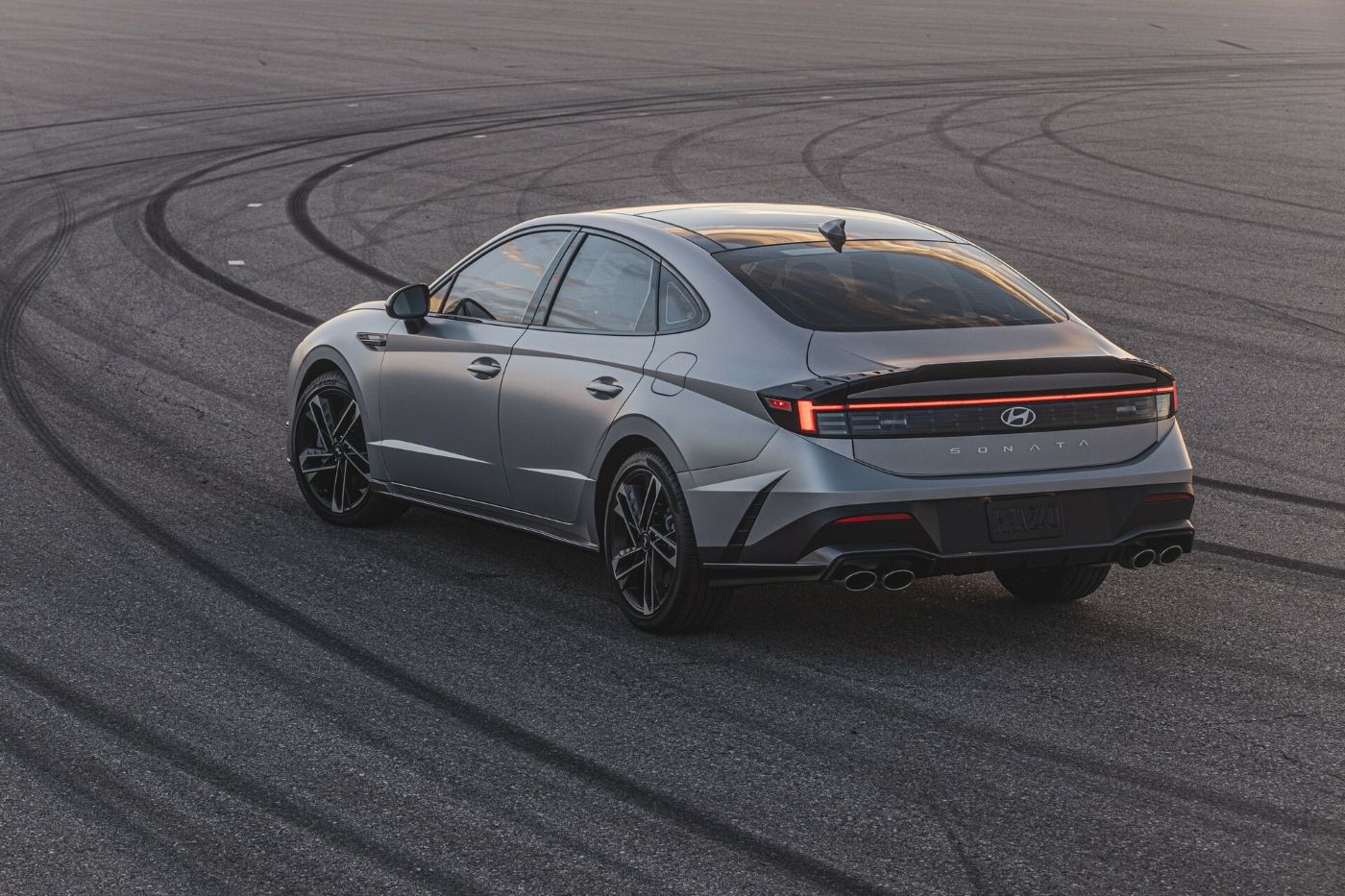Key fob range may not top the list of features when buying a sedan, but it’s an underrated convenience especially when you’re juggling groceries or navigating a crowded parking lot. Some sedans give you over 200 feet of key fob range, while others make you walk right up to the door before anything happens.
In the age of smart technology, even something as simple as a car key fob has evolved into a crucial piece of modern convenience. Whether you’re unlocking your car from across a parking lot or starting the engine remotely during a freezing winter morning, the range of your key fob can make a big difference in everyday usability.
But not all sedans are created equal when it comes to remote range. Some models offer impressive reach, letting you control key functions from afar, while others demand that you be practically hugging the vehicle to get a response.
In this article, we dive into five sedans that lead the pack with the best key fob range—and five that will test your patience by keeping you uncomfortably close.
Sedans With the Best Key Fob Range
When it comes to everyday driving convenience, key fob range is one of those underrated features that can make a big difference. Whether you’re trying to unlock your car from across a crowded parking lot, start the engine from the warmth of your home, or simply locate your vehicle in a sea of similar-looking sedans, a long-range key fob can be a game changer.
Not all sedans are built with the same remote capability, though. Some go above and beyond with extended-range fobs and advanced tech that let you interact with your car from surprising distances.
1. 2024 Toyota Camry
Toyota’s latest Camry offers a smart key system with exceptional range often working up to 200 feet away in open spaces.
Whether you’re pre-heating the cabin or unlocking the trunk, the Camry’s fob is impressively responsive.
Owners report strong performance even through walls or at extended distances in parking lots, thanks to Toyota’s advanced wireless module.
The Toyota Camry has performed its role with such consistency and success that it has transcended being just another sedan—it’s become a staple of the automotive world. While it has lost some sales ground in today’s SUV- and truck-obsessed market, the Camry remains the best-selling sedan in the U.S. for over two decades.
Unlike rivals such as the Honda Accord and Hyundai Sonata, which have dropped six-cylinder options, the Camry continues to offer a 301-horsepower V-6 for those who want more muscle, while also catering to efficiency-minded drivers with a hybrid four-cylinder that delivers excellent fuel economy.
The current generation has added a welcome dash of style to its long-standing reputation for reliability, especially with design-focused trims like the Nightshade Edition that brings bronze wheels and visual flair.
And although the TRD model is the most aggressive Camry yet, the upgrades from Toyota Racing Development haven’t changed its core identity—at the end of the day, it’s still the dependable, practical Camry that’s been winning over families for decades.
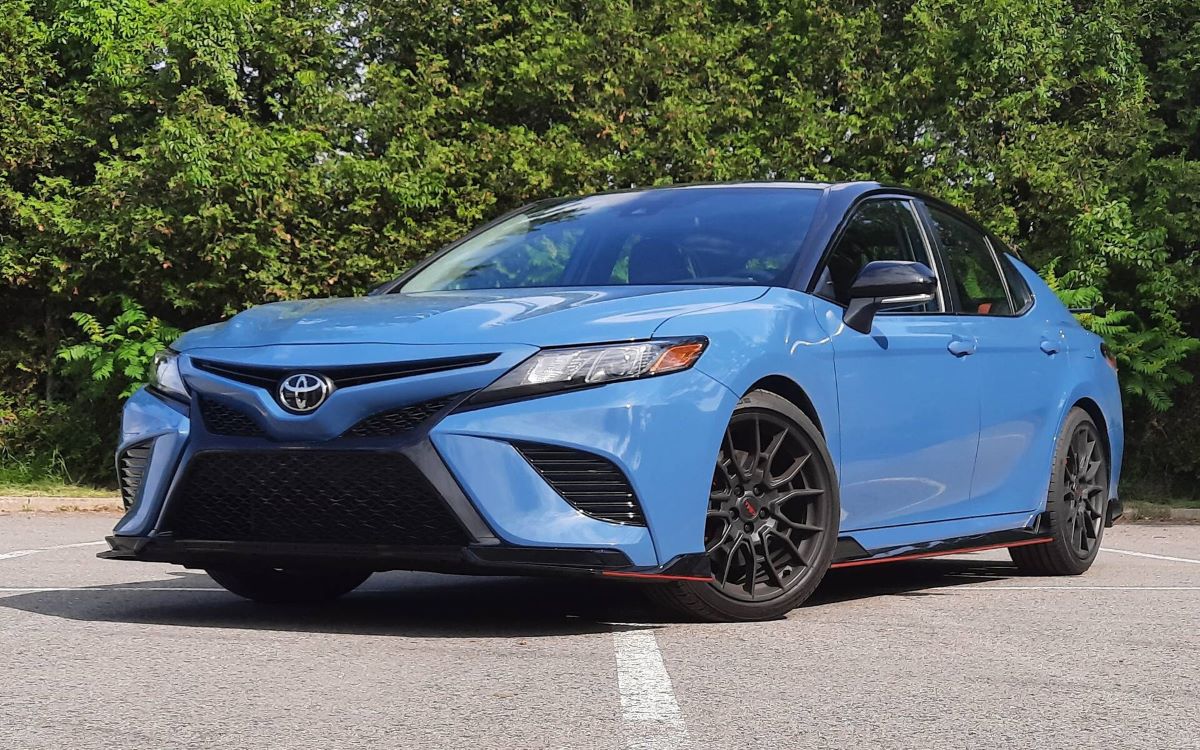
For the 2024 model year, Toyota has made just one change: the removal of Amazon’s Alexa interface from the infotainment system. Aside from that, everything carries over unchanged from the previous year. Pricing starts at $27,555 for the base LE trim and goes up to $37,980 for the fully loaded XSE V6.
With a 208-horsepower hybrid engine, it won’t thrill speed demons, but it delivers excellent fuel efficiency and a serene ride. Its leather-trimmed interior is both attractive and spacious, making it a top pick for families and commuters alike. Driven conservatively, it offers one of the best real-world fuel economy figures in its class.
Under the hood, the base four-cylinder is paired with a silky eight-speed automatic transmission, though its performance is adequate rather than exciting. Hybrid versions utilize a slightly detuned version of this engine along with a battery and two electric motors. These models prioritize fuel economy over speed, and it shows in their mild driving character.
However, Toyota’s available 301-horsepower V-6, offered in the XLE, XSE, and TRD trims, changes that narrative, providing smooth, confident acceleration and a much more engaging experience behind the wheel. The Camry’s steering strikes a balance that suits its mission—it’s responsive enough in turns without being overly heavy in tight spaces like parking lots.
Ride quality is tuned for control and comfort, and the handling is surprisingly competent for a midsize family sedan. Even the braking system impresses with a responsive pedal feel, including in the hybrid trims, where regenerative braking seamlessly works with traditional friction brakes.
2. 2023 Honda Accord
The 11th-generation Accord continues Honda’s tradition of strong fob performance. It includes remote engine start and unlock features that work reliably from 150–200 feet away.
Some owners have even reported successful use through building windows or across large garages, making it great for all-weather readiness and security checks.
Setting a high standard comes with a price—every new version must live up to it. Honda has long dominated the shrinking midsize sedan market, with the previous Accord earning top honors.
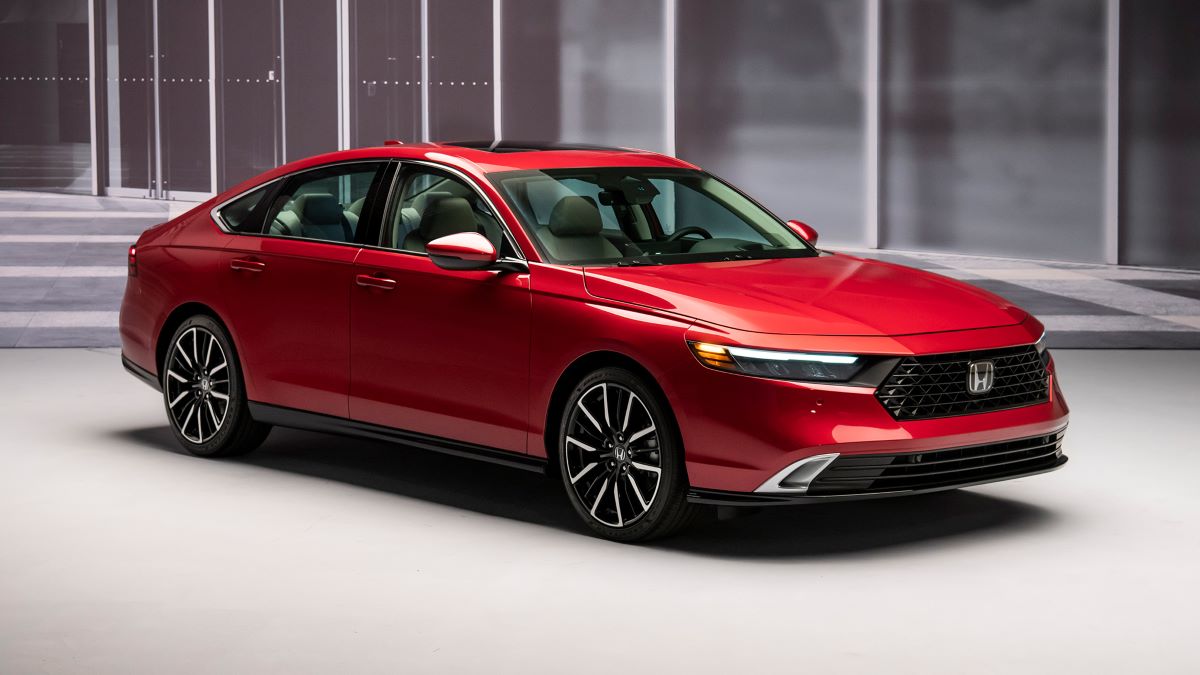
Now, with the arrival of the redesigned 2023 Honda Accord, expectations are understandably sky-high. And while this latest iteration brings several key improvements, it doesn’t quite hit the same high mark set by its predecessor.
To truly understand what the new Accord offers, it’s best to start with the entry-level trims. The base LX and the step-up EX models are powered by a 1.5-liter turbocharged four-cylinder engine mated to a continuously variable transmission (CVT).
Compared to last year’s model, fuel economy remains similar, maintaining a competitive 29/37/32 mpg city/highway/combined. With 192 horsepower and 192 lb-ft of torque, the engine delivers suitable performance for a midsize sedan. The turbocharger kicks in early, giving the car solid responsiveness from a standstill—impressive for a model aimed at everyday driving.
Honda’s CVT continues to shine as one of the best in the segment, offering smooth and fast ratio changes that maximize the engine’s capabilities. While the brake pedal could feel more precise, the overall braking system performs well, offering a balanced relationship between pedal pressure and stopping power.
Also Read: Top 10 EV Features That Come in Useful in Daily Commute
3. 2022 Ford Fusion (with optional Remote Start)
Though discontinued, the 2022 Fusion with Ford’s Intelligent Access and Remote Start package is known for excellent fob range.
Many drivers note consistent performance up to 250 feet in clear conditions, particularly with the SE and Titanium trims. It’s ideal for early-morning commuters needing to warm or cool the car from indoors.
The Fusion is gone—but not really. While Ford has officially ended production of the Fusion sedan, a longtime staple in the Top 10 of midsize sedan rankings, the nameplate appears poised for a return, this time in an entirely new form.

Although Ford hasn’t released any official details, sightings of heavily camouflaged test vehicles suggest the Fusion name will soon be attached to something far different from the traditional sedan we knew.
From what we can tell, the new Fusion seems to follow a formula similar to the Subaru Outback: a lifted wagon body style with rugged, outdoorsy appeal. Its design hints at crossover influences, with styling elements that echo those of the Mustang Mach-E.
There’s also speculation that Ford might name it the Fusion Active, aligning with the company’s European naming convention for adventure-ready variants. Details on powertrains are still under wraps, but it’s reasonable to expect a selection of engines from Ford’s existing lineup.
That could include turbocharged four- and six-cylinder options, and possibly even a hybrid configuration. It’s also likely that the upcoming Fusion will be available in both front-wheel-drive and all-wheel-drive formats, giving it added versatility for a range of buyers.
4. 2024 Hyundai Sonata
Hyundai includes a strong-performing fob in the Sonata, especially on models with the Digital Key and Smart Key features.
In tests, the Sonata’s fob can work reliably from more than 180 feet away, and remote start functions often kick in from across parking garages.
Hyundai’s inclusion of smartphone key features also extends digital range beyond traditional limitations. The Hyundai Sonata injects some much-needed attitude into the family-sedan segment, with its latest update aiming to grab attention and possibly nudge some rivals out of their slumber.
For 2024, the Sonata receives a mid-cycle refresh that brings redesigned front and rear bumpers, updated headlights and taillights, and a substantial overhaul of the interior.
Although the powertrain lineup remains mostly the same—with a 191-hp 2.5-liter four-cylinder and a sporty 290-hp turbocharged four-cylinder in the N Line model—Hyundai now offers all-wheel drive for versions equipped with the naturally aspirated engine. The 192-hp Sonata Hybrid, known for its impressive fuel economy, continues unchanged.
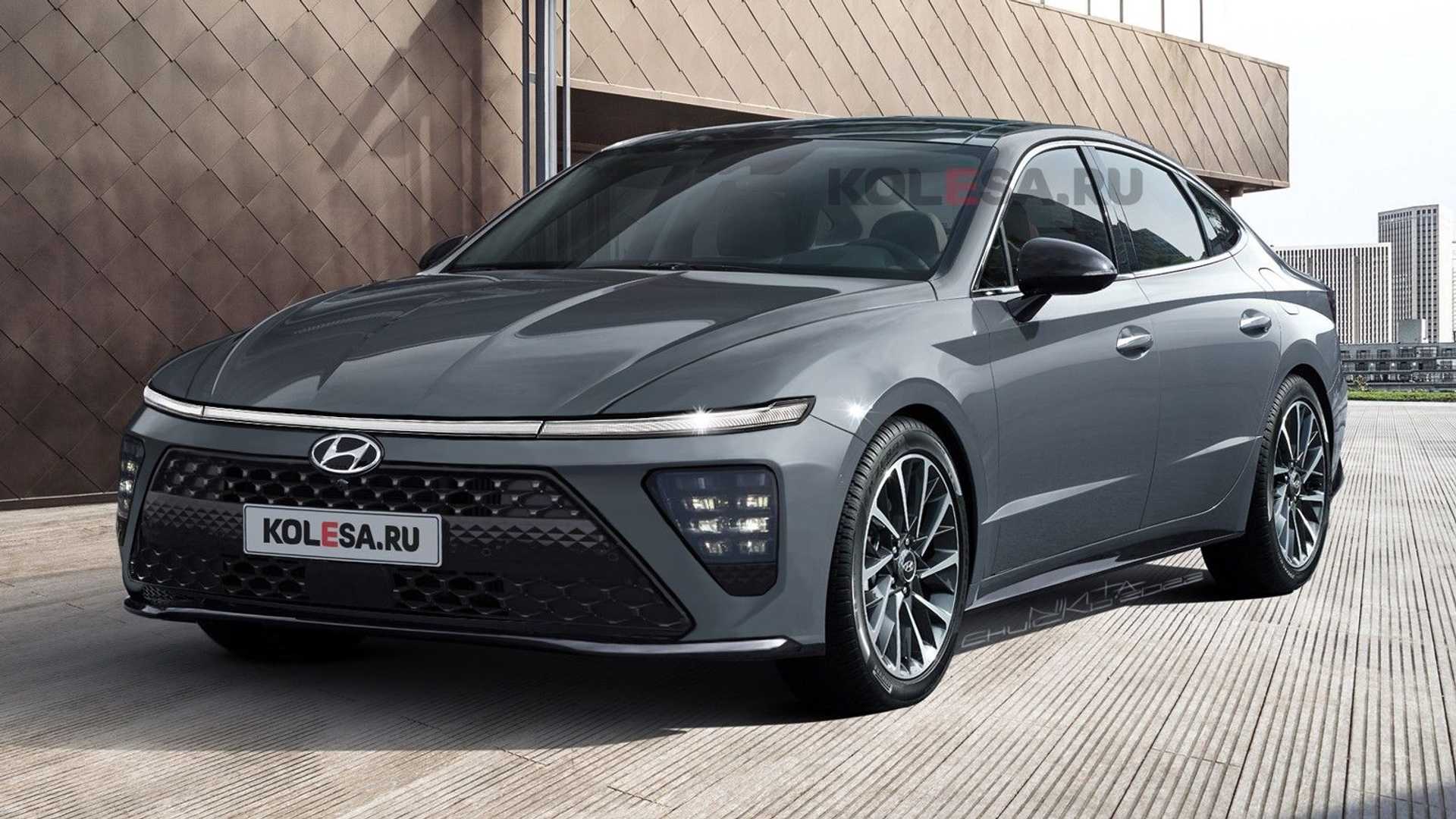
While the Sonata may not handle quite as crisply as the Honda Accord, its bold styling and excellent value proposition help it stand out in a crowded field. These qualities also earned it a spot on our 2024 Editors’ Choice list.
For the 2024 model year, Hyundai has revamped the Sonata’s appearance and interior layout. The unusual daytime running lights that once ran parallel to the hood have been replaced with a new light signature that stretches across the front bumper. The rear bumper and taillights also see a redesign.
Inside, the Sonata takes a more modern turn with dual 12.3-inch infotainment screens housed within a single, curved display unit. The steering wheel has been updated, and in a significant ergonomic shift, Hyundai has relocated the gear selector from the center console to a rotary knob on the steering column.
Mechanically, the introduction of optional all-wheel drive—available only with the base 2.5-liter engine—is a notable change. Hyundai has also dropped the 180-hp turbocharged 1.6-liter inline-four, though the high-output 290-hp turbocharged 2.5-liter engine in the N Line trim remains part of the lineup.
5. 2023 Chevrolet Malibu
Chevy’s Malibu might not top charts for innovation, but its fob range is impressively long often 200+ feet for remote start and unlocking.
The Malibu’s system is designed to boost signal strength in wide open spaces, and its Smart Remote Start is highly praised by those living in extreme climates who rely on it daily.
For anyone looking to buy a new Chevy sedan in 2023, the Malibu is the only game in town—and not exactly the most compelling one at that. Despite maintaining a spot in the midsize sedan category, it faces stiff competition from far more capable rivals like the Honda Accord and Hyundai Sonata.
The Malibu comes in at the bottom of our rankings for a reason. It’s not entirely without merit; we appreciate its comfortable ride and pleasant driving character. However, it simply doesn’t match the equipment levels or interior quality offered by others in the segment.
That said, its exterior design is still appealing to many, and its standard turbocharged four-cylinder engine delivers just enough power for daily driving without drawing too much attention.
While it skimps on standard driver-assistance features, the Malibu does include a solid infotainment setup featuring wireless Apple CarPlay and Android Auto. Tech such as blind-spot monitoring and adaptive cruise control is available, but you’ll have to pay extra for those upgrades.
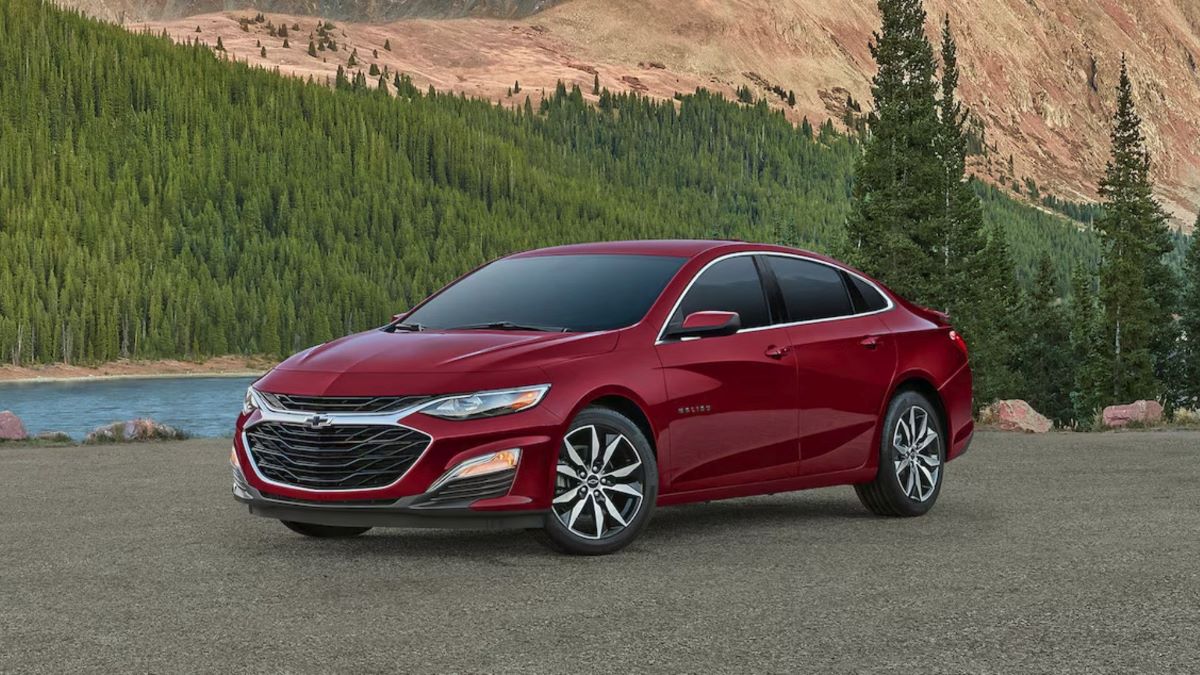
In terms of segment rankings, the Malibu sits at number seven among midsize family sedans for 2023. Top contenders like the Honda Accord, Kia K5, Hyundai Sonata, Toyota Camry, and Nissan Altima all offer more compelling packages. If you want to stack the Malibu against the competition, Chevy offers a new comparison tool to help you see how it measures up.
Pricing for the 2023 Chevrolet Malibu starts at $26,095 and tops out at $32,595 depending on trim and options. The base LS model is followed by the RS, and then the better-equipped LT, which we recommend.
It offers more features like 17-inch wheels, dual-zone automatic climate control, heated front seats, remote engine start, and a power-adjustable driver’s seat.
The LT also includes automated emergency braking and lane-keeping assist, while optional features like blind-spot monitoring and rear cross-traffic alert can be added via the $545 Driver Confidence package. If you’re looking for a sportier appearance, consider the Sport Edition or Midnight Edition, which bring black 19-inch wheels and dark exterior trim.
On the fuel economy front, the Malibu underdelivers compared to its key rivals. EPA ratings put it at 30 mpg combined, a slight dip from last year. Still, in real-world testing, the Malibu managed a decent 34 mpg on a 75-mph highway route. For more detailed fuel economy stats, you can visit the EPA’s website.
Inside, the Malibu doesn’t offer the plushest or quietest interior, but it is user-friendly and reasonably comfortable. Passenger space is competitive, though outward visibility trails behind most rivals. The symmetrical dash design and open center stack give the cabin a sense of space.
The front seats are supportive but narrow for larger occupants. In back, legroom is less generous than what you’ll find in the Accord, though it still accommodates adults comfortably. The trunk is spacious and can handle a decent load of carry-on bags, with adequate interior storage to match.
Every Malibu comes with a touchscreen infotainment system that includes Apple CarPlay, Android Auto, and a mobile Wi-Fi hotspot. The interface is intuitive, but it lacks a secondary control knob—a feature that’s becoming more common in newer systems from competitors.
Sedans Where You Must Be Beside the Car
Sedans where you must be beside the car to access key features or functions typically rely on older or more basic technology compared to modern vehicles equipped with full keyless entry or smartphone integration.
In these sedans, you may need to physically insert a key into the door to unlock it or into the ignition to start the engine. Some models may lack remote start functionality or proximity sensors, meaning that unlocking the doors, opening the trunk, or even rolling down the windows requires direct interaction with the car—no remote fobs or apps to make things more convenient.
1. 2023 Nissan Altima
While the Altima offers intelligent key features, the actual fob range leaves much to be desired. Remote functions often require you to be within a few feet of the vehicle.
Some owners report failed unlock attempts unless they’re standing within arm’s reach of the driver’s door frustrating in a downpour or when carrying bags.
The Nissan Altima has long been a reliable presence in the midsize sedan category, and the 2023 model receives several modest updates that help it stay competitive. While these changes don’t reinvent the car, they do add value, although there are still a few areas where the Altima could be stronger.
During a week of testing, the 2023 Altima impressed us with its distinctive styling, unique turbocharged engine, and spacious interior—attributes that help it stand out in a crowded field. Nissan gave the Altima a freshened look for 2023 with new LED headlights, a redesigned front fascia, and an updated logo.
Additional paint color options are now available, and the previously named Platinum trim has been rebranded as the SL. A new 12.3-inch infotainment touchscreen is also available, while certain safety features have been made standard across more trims.
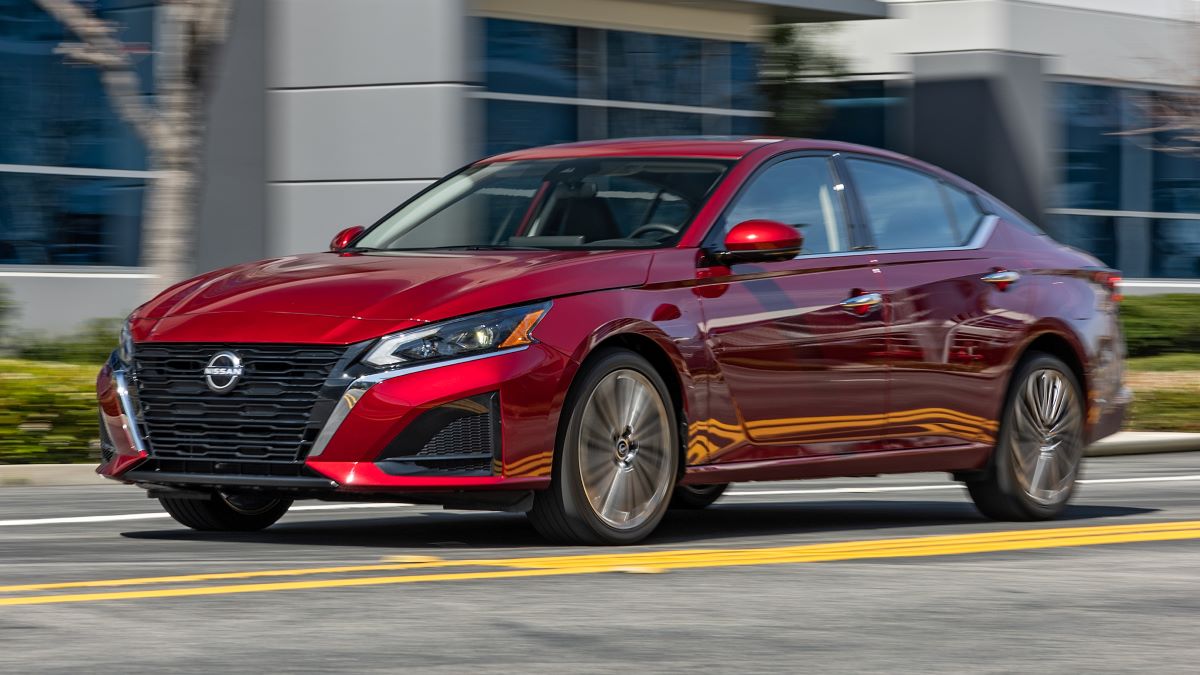
All trims except the SR VC-Turbo offer optional all-wheel drive for an extra $1,400. We tested the SR VC-Turbo model in Deep Blue Pearl, priced at $36,440 as equipped. That total included the $1,095 destination fee and an additional $65 for accessories like floor mats, a trunk mat, and cargo nets.
The standout feature of the Altima is its available variable compression turbocharged engine. This unique technology allows the engine to behave like a fuel-efficient four-cylinder under light load and deliver the punch of a V6 under heavy throttle. In our real-world driving experience, this translated to a noticeable surge of power mid-range, with the turbo kicking in to push us back in our seat.
However, the continuously variable transmission (CVT) somewhat detracts from this performance. The CVT’s single-gear nature causes a sluggish feel off the line, making the Altima seem slow from a dead stop. Once up to speed, though, the powertrain feels strong and capable.
Beyond its powertrain quirks, the Altima is a comfortable and quiet cruiser, even at highway speeds. It handles daily driving duties with composure, offering light steering effort that makes it easy to park and navigate tight urban spaces, even if the steering feedback is a bit numb.
The 360-degree camera system is a major asset when maneuvering. Visibility is strong out the front and sides, though the slightly elevated rear end hinders rearward visibility somewhat.
Overall, the 2023 Nissan Altima delivers a distinctive combination of comfort, space, and turbocharged performance—helping it remain relevant in a segment that’s slowly shrinking.
Also Read: 5 Trucks with the Best Tow-Prep Packages and 5 Trucks with Minimal Tow Gear
2. 2022 Volkswagen Jetta
Volkswagen’s minimalist fob design for the Jetta might look clean, but the range is shockingly limited.
Many users find themselves walking within 10–15 feet for successful unlocking, and remote start is nearly useless unless you’re already right beside the car. Inconsistent signal strength further worsens the experience.
For the 2022 model year, the Volkswagen Jetta receives a subtle refresh that includes updated exterior styling, a handful of new standard and available features, and an upgraded engine sourced from the VW Taos subcompact SUV. Replacing the previous 147-hp 1.4-liter turbocharged four-cylinder engine is a new 1.5-liter turbo four-cylinder that produces 158 horsepower.
In addition to the powertrain upgrade, the trim lineup sees a change as the R-Line is replaced by a new, sportier Sport model. This trim level stands out with its own design elements, 17-inch wheels, and an electronically locking front differential for enhanced performance.
The entry-level S model is also improved with a greater list of standard features, including an 8.0-inch fully digital gauge cluster and advanced safety systems such as automated emergency braking and blind-spot monitoring. Volkswagen anticipates the 2022 Jetta will go on sale sometime in the fall.
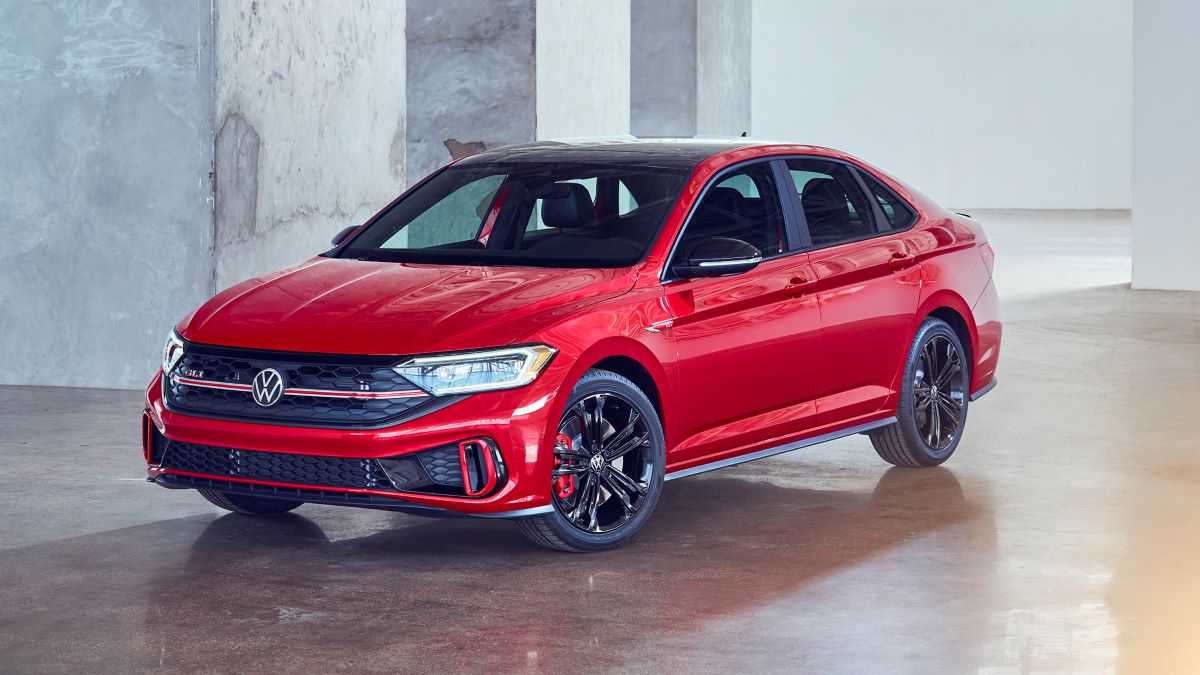
It offers a distinctive blend of visual flair and value, including 17-inch wheels with a unique design, black exterior and interior trim accents, and an electronically locking front differential that sets it apart in terms of driving dynamics.
Under the hood, every 2022 Jetta sends power to the front wheels via a turbocharged 1.5-liter four-cylinder engine that produces 158 horsepower and 184 pound-feet of torque. The base version comes standard with a six-speed manual transmission, while an eight-speed automatic is available as an option.
In performance testing, an automatic-equipped SEL trim reached 60 mph in 7.1 seconds, which is 0.6 seconds quicker than the previous automatic Jetta model we evaluated. While the Jetta offers a smooth and quiet ride that many drivers will appreciate, its steering, though light and effortless, doesn’t offer much in terms of precision or feedback.
Compared to more engaging alternatives like the Mazda 3, the Jetta lacks excitement during spirited driving and tends to lean noticeably in sharp corners taken at higher speeds. Still, for drivers who prioritize a relaxed, comfortable commute over sporty handling, the Jetta’s refined demeanor makes it a solid, if subdued, choice.
3. 2023 Subaru Legacy
Subaru includes a lot of safety tech, but long-range fob functionality isn’t one of its strengths.
The Legacy’s remote start (if equipped) often works only within 30 feet, and unlocking sometimes fails unless you’re right next to the door handle.
Its signal seems especially poor in crowded or cluttered urban environments. The 2023 Subaru Legacy comes standard with a 182-hp 2.5-liter naturally aspirated flat-four engine, while buyers seeking more power can opt for the available 260-hp 2.4-liter turbocharged boxer-four found in the XT trims.
Both engine choices are mated to a continuously variable automatic transmission (CVT) and deliver power to Subaru’s signature symmetrical all-wheel-drive system.
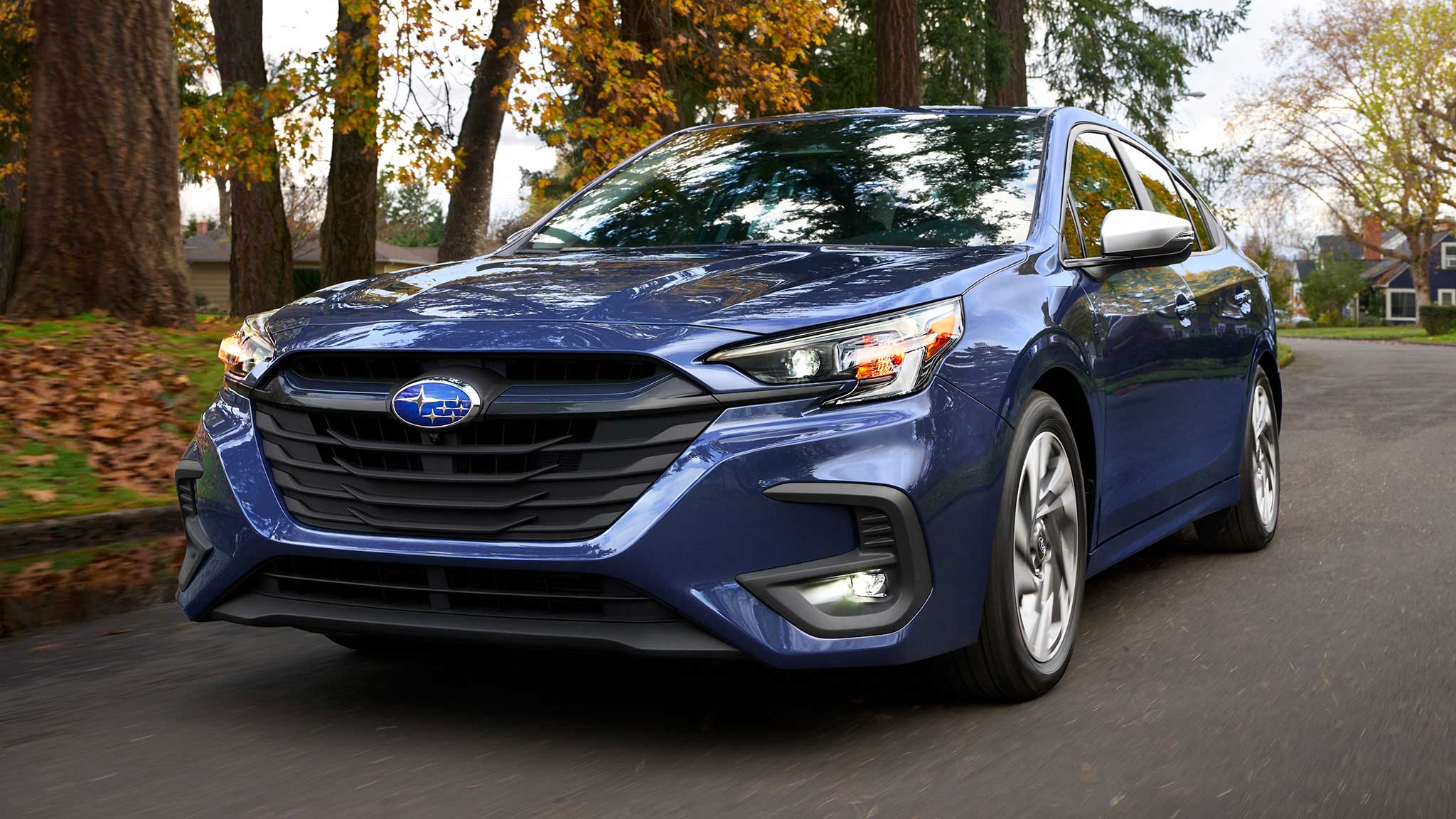
In terms of fuel efficiency, Legacy models equipped with the naturally aspirated engine offer the best numbers, with EPA ratings of 27 mpg in the city and 35 mpg on the highway.
These figures hold up well against similarly equipped all-wheel-drive sedans, such as the 2022 Nissan Altima AWD, which delivers 26/36 mpg, and the more potent 2022 Toyota Camry AWD, rated at 25/34 mpg. For those choosing the turbocharged Legacy, fuel economy comes in at 24 mpg city and 32 mpg highway.
That’s on par with front-wheel-drive turbocharged competitors like the 2022 Honda Accord 2.0-liter turbo (22/32 mpg) and the 2022 Kia K5 2.5-liter turbo (24/32 mpg).
We’ve always questioned why the Legacy Sport trim was only available with the less dynamic 2.5-liter naturally aspirated engine. That changes for 2023. Subaru has finally outfitted the Legacy Sport with the stronger turbocharged engine, matching its performance more appropriately with its sport-tuned suspension, LED fog lights, moonroof, and built-in navigation system.
There’s no confusing the Sport trim with other Legacy models. On the outside, it features exclusive gray 18-inch wheels, uniquely colored side mirrors, and a distinct trunk spoiler.
A horizontal red accent strip spans the new grille, emphasizing the model’s aggressive styling. Inside, the Sport trim is dressed in black and gray two-tone cloth upholstery, accented by red contrast stitching, giving the cabin a bold and athletic look.
4. 2024 Kia Forte
Despite Kia’s growth in tech, the Forte’s fob range feels outdated. Several users note that they must stand within a few steps of the vehicle before the lock/unlock or remote start features will engage.
The signal also suffers around buildings or when the battery starts to weaken well before other sedans would show decline.
As truly small and budget-friendly sedans become harder to find, the Kia Forte continues to make its presence known. This compact sedan has remained a core part of Kia’s lineup, with the current generation debuting in 2019 and receiving a mid-cycle refresh in 2022.
Although it was once available in hatchback form, the Forte is now sold solely as a four-door, five-passenger sedan. Key rivals for the 2024 Kia Forte include the Honda Civic and Toyota Corolla.
For the 2024 model year, Kia has dropped the GT-Line Tech Package from the options list—but the features it contained are now standard on the GT-Line trim.
As a result, the mid-tier Forte variant now comes standard with front automatic emergency braking with pedestrian detection, adaptive cruise control, lane keep assist, and an electronic parking brake. Pricing across the lineup has gone up slightly, with the exact increase depending on the trim.
What makes the Kia Forte stand out most is just how unremarkable it is—and that’s exactly its strength. At a time when affordable, efficient small sedans are disappearing, the Forte remains a solid option for drivers who want a no-nonsense, economical vehicle.
Even a couple of years past its refresh, the Forte maintains a stylish exterior. In its GT trim, it even delivers a bit of fun behind the wheel, thanks to a turbocharged engine and sport-tuned components.
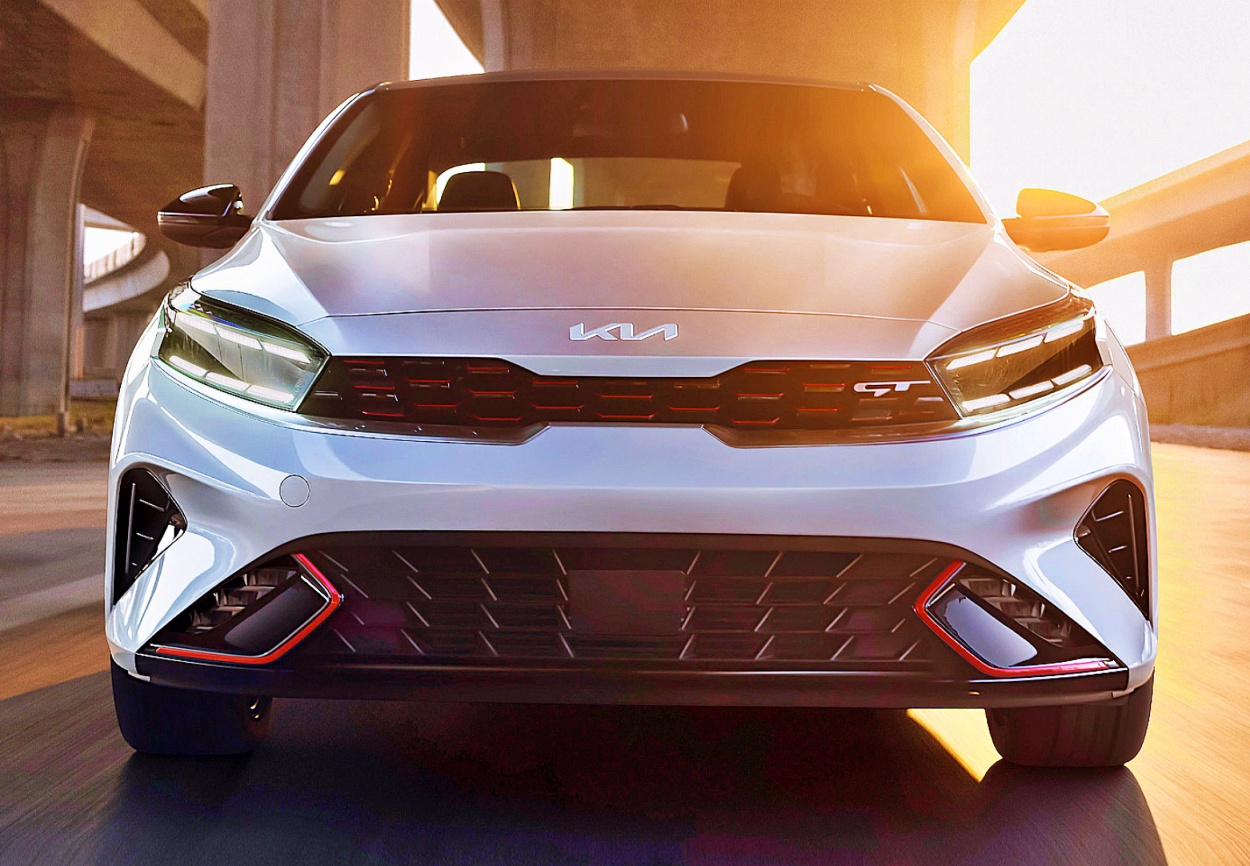
That said, the base model, powered by a naturally aspirated engine, offers a more subdued driving experience—adequate but uninspiring. The CVT transmission and suspension tuning aren’t particularly refined, yet the generous list of standard features helps balance that out. The Forte continues to offer solid value for the money.
While some of its competitors provide a more engaging drive and offer more up-to-date features, the Forte is tough to beat on price. It deserves credit for being affordable without feeling overly cheap.
The standard powerplant in the Kia Forte is a 2.0-liter inline-four engine that delivers 147 horsepower and 132 lb-ft of torque. It’s paired with a CVT automatic transmission and front-wheel drive.
5. 2023 Mazda3
Mazda’s focus on driving dynamics comes at the cost of long-range remote capabilities. The Mazda3’s fob must often be within 10–20 feet for any function to work.
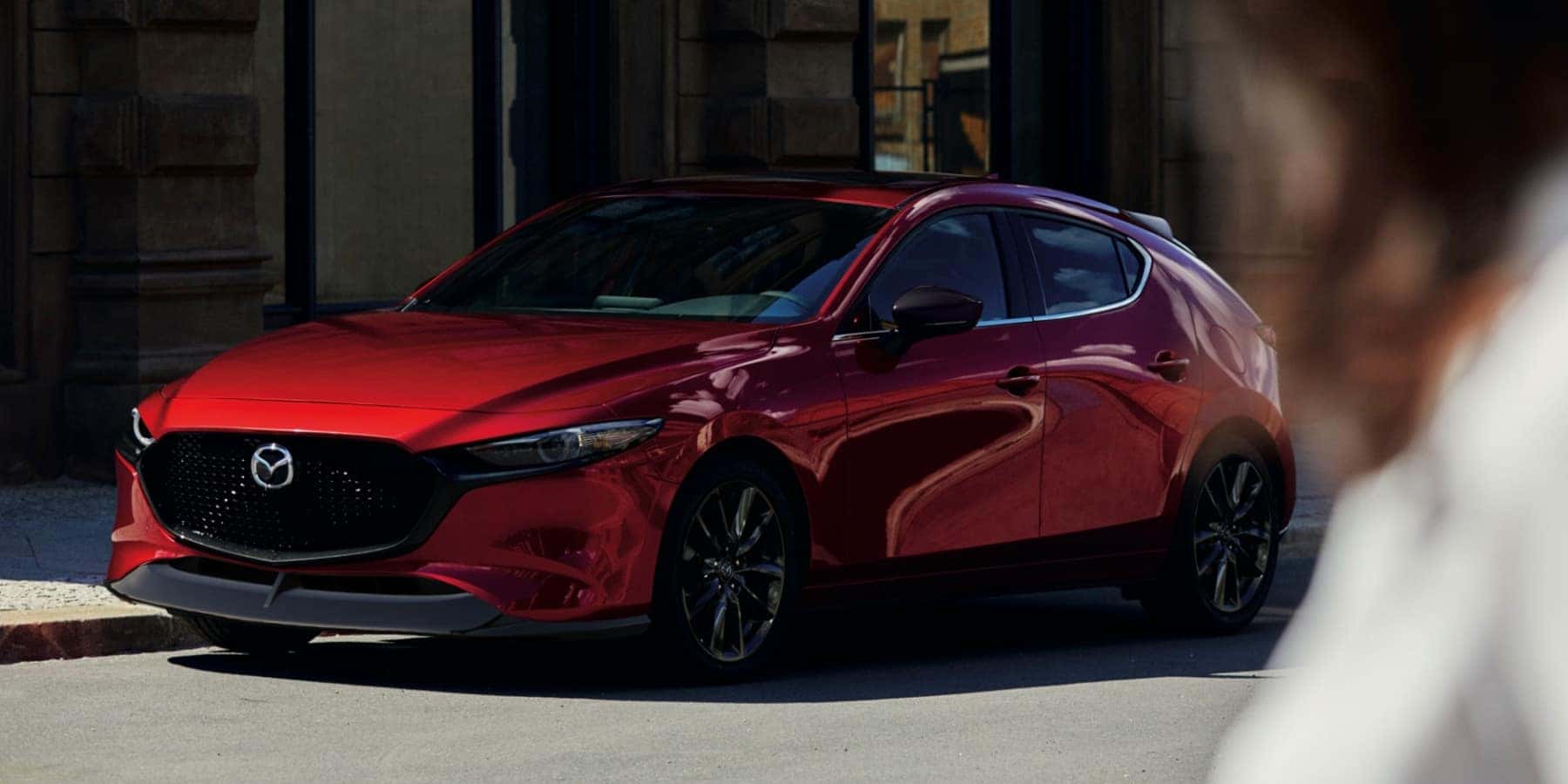
It lacks a proper remote start option on many trims, and the smart keyless entry system is overly conservative in terms of signal strength, which is a letdown for otherwise tech-savvy buyers.
While key fob range might seem like a small detail, it can make a big difference in convenience, especially during harsh weather or hectic routines.
Sedans like the Camry, Accord, and Sonata shine by allowing control from impressive distances, while models like the Mazda3 and Jetta require you to practically touch the car before anything happens.
If range matters to you, pay attention not all fobs are created equal.

